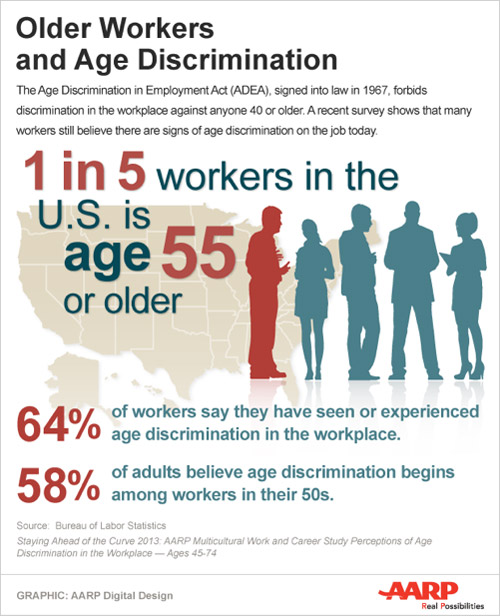
Although it’s still a challenge, corporate America is making huge strides towards real inclusivity in the workplace. Most organizations now understand the value of a truly diverse team and people are feeling empowered to speak out against discrimination. But there is still one taboo to tackle: ageism.
Age-based discrimination hasn’t received as much airtime as gender, racial or ethnic discrimination, but the issue is starting to gain awareness.
Prepare for an increasingly older workforce
Healthier diets, regular exercise, and better healthcare mean that people are increasingly likely to remain active in the workforce for longer. We live in a time when seniors outnumber children. According to the AARP, one in five American workers, 20%, is now 50 years of age or older.
Sadly, two-thirds have experienced age discrimination in the workplace, with more than half believing that discrimination begins once you turn 50. Last year, a survey from Indeed found that 43% of employees worry about losing their jobs due to their age, with nearly 18% worrying about it all the time.
The concern is even more pronounced in STEM fields, with a 2017 Modis survey of 1,500 U.S. adults who work as decision makers in these industries finding that 58% of respondents over the age of 55 view age disparity as the greatest challenge to overcome.

You may have seen the news about the UK RSPCA’s interim chief executive, Michael Ward (57), who resigned and was given a six-figure settlement amid claims he was turned down for the permanent role because of his age – with the job going to a 37-year-old instead. And in 2016, 53-year-old CPA Steve Rabin filed a lawsuit accusing PwC of discriminating against older candidates. He argued that the company’s near-exclusive reliance on campus-recruiting practices prevented older workers from applying for jobs.
Even Facebook has been dragged into the fray, with the New York Times questioning the platform’s age-specific job advertising. A class-action complaint alleging age discrimination was recently filed in federal court on behalf of the Communications Workers of America and its members and all Facebook users over the age of 40 who may have been denied the chance to learn about job openings, an allegation that Facebook completely rejects.
Understand the value of older employees
Ageism has become a subconscious ‘norm’ for companies. We have been programed to expect employees to wind down and retire at 60. As a result, we have missed out on the value of highly experienced, emotionally mature employees.
Not only are older employees more experienced, research shows that they stay twice as long as 25-34 year olds, making them better value for money than their job-switching millennial counterparts. They have even been shown to be more productive and reliable than younger employees.
It’s worth giving careful thought to the role of older employees in your workforce. Are you forward-thinking enough to see the extended longevity of employees as an opportunity?
I hope so.
Here are some thoughts on how to retain and get the most out of your older employees.
- Create tailored retention programs for them
Baby boomers are not unlikely to enjoy the same social activities as Millennials and Gen Yers – they probably aren’t thrilled at the thought of sports events and nights out. Why not offer older employees the chance to enjoy a sumptuous meal or take in a theatre show together. - Give them the opportunity to mentor younger employees
Mentorship is a vital part of ensuring retention for younger employees, and it can be just as valuable for older employees. Additional responsibility and opportunity to share their expertise with others can be hugely motivating.Some older employees are even willing to be mentored by younger employees – what a great opportunity to learn about new technology! - Encourage them to move internally
Just because an employee has 20 years’ experience in one field, doesn’t mean they won’t be equally as effective in something a bit different. You’d be surprised at how many employees have considered changing careers but lack the confidence to do so.An internal “gig” program can give older employees a new source of energy and motivation, and they’ll offer valuable insight to their new team. - Allow them to set their own agenda
Creating an affinity group for older employees will help ensure that this valuable group is able to communicate its needs to the organization – making them feel valued and included.Tracking the engagement, performance and retention of older employees will help you understand what motivates them, and go a long way to building a truly diverse workforce.
Integrate and retain older employees with vi by Aderant
To learn more about how vi can help you create tailored employee integration and retention pathways for employees of different generations, visit our website or leave your details below to book a demo.